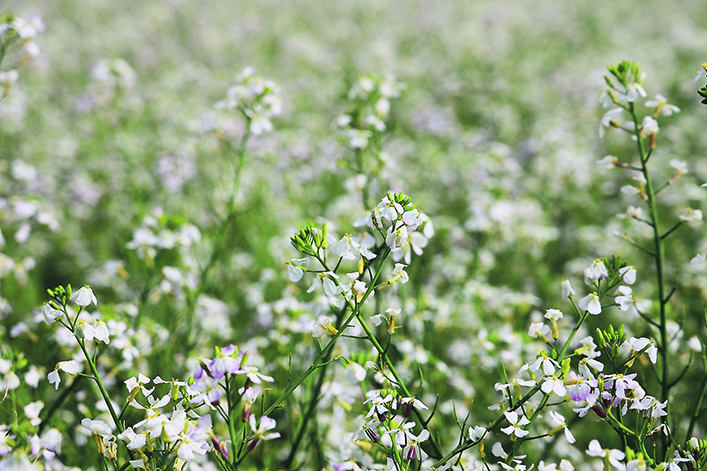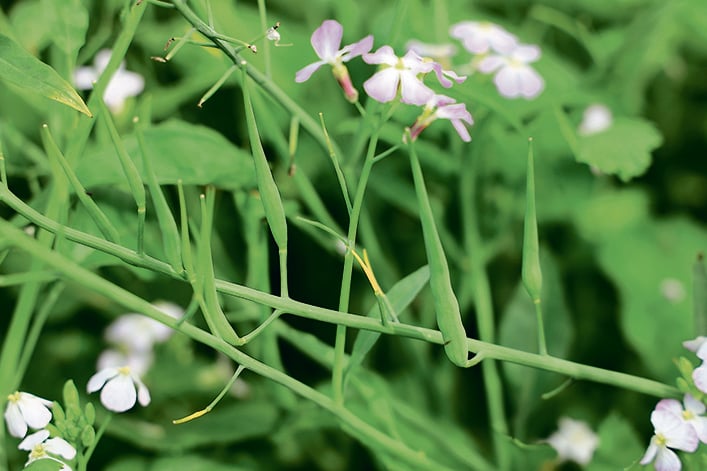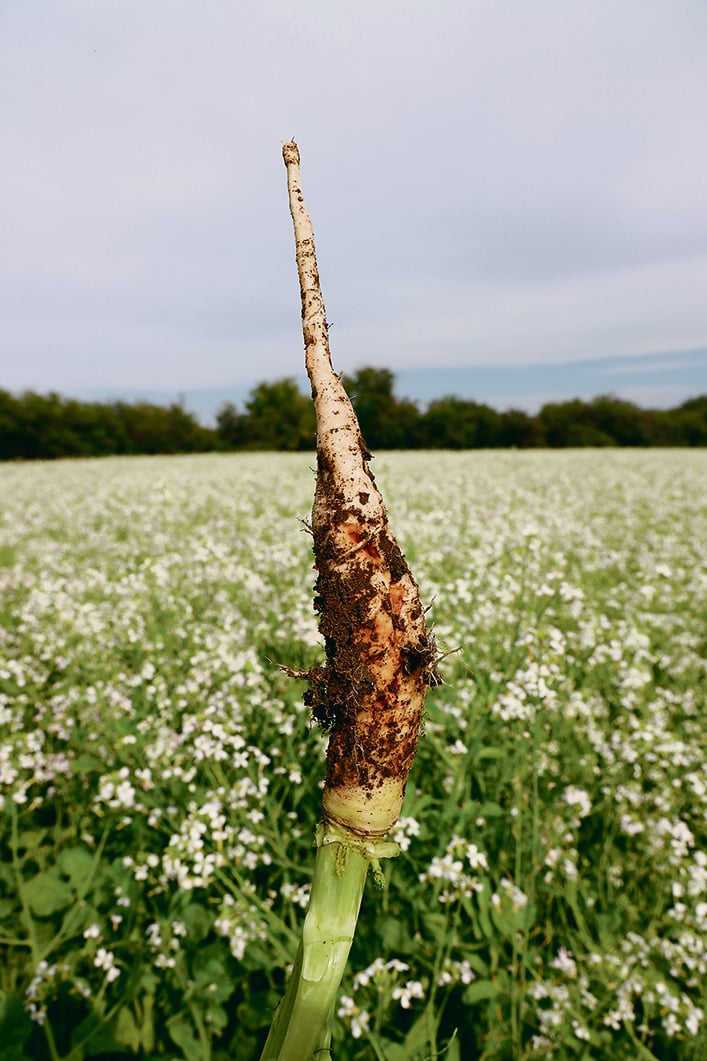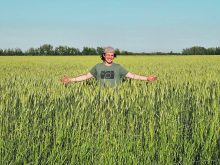Farmer who produces the crop for seed says walking in a field in which it has grown feels like walking on a marshmallow
NEW NORWAY, Alta. — Fields of yellow-flowered canola are common across the Prairies, but a 50-acre field of white-flowered radish is a car stopper.
Last year Ryan Mowat grew an eight-acre plot to see if the daikon radish, or forage or tillage radish, would grow and set seed at his central Alberta farm. It was so successful, he planted 50 acres for seed this spring.
“It yields quite heavy,” said Mowat, who doesn’t know how to measure the bushel weight because of the limited information on the crop.
“I took two metric tonnes of cleaned seed off the eight acres.”

Mowat began growing the crop for seed so he could use it in a cover crop mixture on farmland near Hardisty, Alta., about an hour east of the New Norway farm. The sandy soil near Hardisty has been given a boost by the four- to five-year rotation of a cover crop, which includes the deep-rooted daikon radish.
“The radish overwinters in the ground, dies and rots and leaves an opening in the ground for the water to run in and aerates the soil,” said Mowat, who said it isn’t uncommon to have tap roots two inches at the top and one foot deep into the ground.

In his seed crop fields, he is focusing on seed production, not root production. The daikon radishes are seeded in a cover crop mixture with eight or nine other seed varieties. The cover crop isn’t taken as hay, or grazed, but left to grow as a type of green manure.
While there is no income off the field the year the cover crop is grown, Mowat said the payment comes in the following years with increased yields. Seeding wheat the following year after the cover crop has seen big yield benefits.

“The ground needs help when you are continuous cropping. The land in Hardisty is sandy and dries out and gets super hard. After growing a cover crop, you can feel it walking in the field. It is like a marshmallow.”
Mowat said while people inquire about the fields of white-flowered radish, few are keen to buy the radish seed for cover crops and skip a year of production.
“I am my biggest buyer.”















